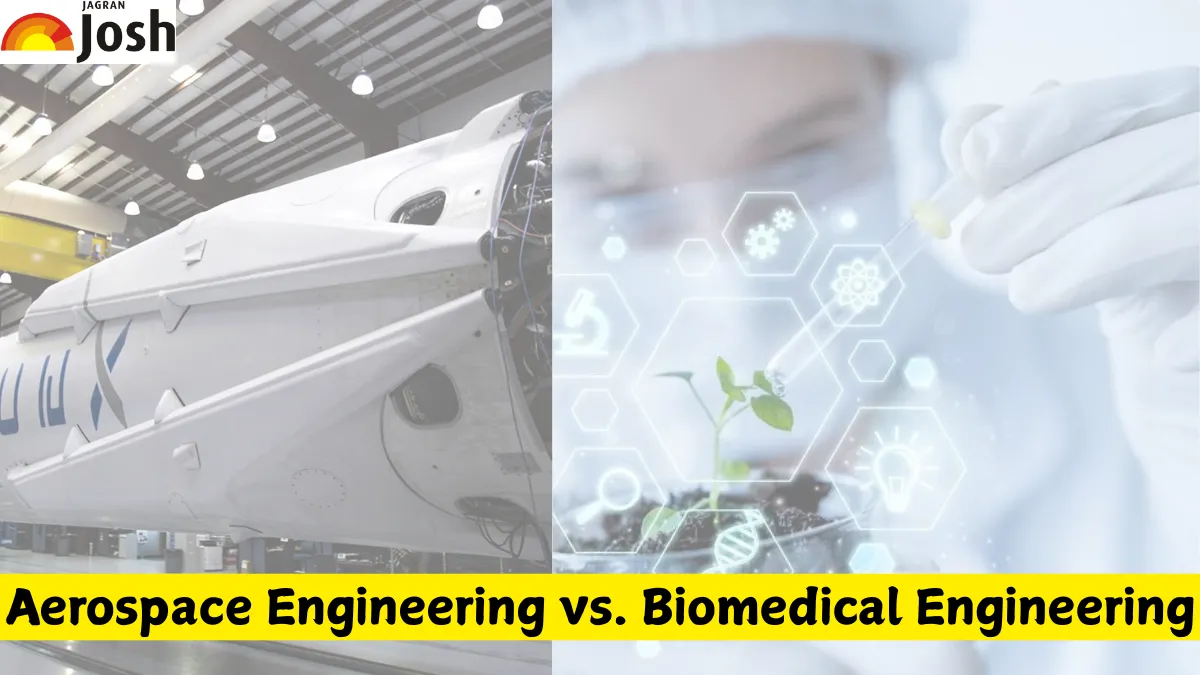Aerospace Engineering vs. Biomedical Engineering: Aerospace engineering and biomedical engineering are two distinct but equally significant fields of modern innovation that provide a wide range of job opportunities with significant social implications. The goal of aerospace engineering, which focuses on creating, developing, and maintaining aircraft and spacecraft, is to rule the air and space.
Because it is based on ideas like aerodynamics, complex propulsion systems, and flight mechanics, this subject appeals to students who are enthralled with the sheer magic of flying and cutting-edge space exploration technology. By directly contributing to advancements in aviation, defense, and space technologies, specialists in this sector push the boundaries of what is possible beyond Earth. On the other hand, biomedical engineering is a potent fusion of engineering concepts with biology and medicine.
Its primary goal is to address complex healthcare challenges through the innovation of medical devices, diagnostic equipment, therapeutic systems, and biomaterials. Biomedical engineers work at the intersection of technology and human well-being, translating scientific knowledge into practical solutions ranging from developing artificial organs to creating advanced imaging technology to improve patient care and overall quality of life. The career opportunities in both fields reflect their unique contributions, from designing the next generation of planes to developing life-saving medical technology.
Aerospace Engineering vs. Biomedical Engineering: Key Differences
Biomedical engineering and aerospace engineering are two separate fields that concentrate on quite different settings and results. Their primary subject matter, application domain, and regulatory environment are where the main distinctions are found.
| Feature | Aerospace Engineering | Biomedical Engineering |
| Primary Focus | Designing, developing, and testing systems that operate in air and space. | Applying engineering principles to human biology and medicine to solve healthcare problems. |
| Core Subjects | Aerodynamics, Propulsion, Flight Mechanics, Structures, Control Systems, Thermodynamics, Astrodynamics. | Biomechanics, Bioinstrumentation, Biomaterials, Medical Imaging, Tissue Engineering, Physiology, Anatomy. |
| Application Domain | Aviation, space exploration, defense systems, satellites, rockets, commercial aircraft, missiles, UAVs. | Hospitals, medical device companies, pharmaceutical industry, rehabilitation, clinical research. |
| Key Output/Products | Aircraft, rockets, satellites, propulsion systems (jet engines, boosters), flight control software. | Prosthetics, artificial organs, medical imaging devices (MRI, CT), surgical robots, diagnostic equipment. |
| Main Challenges | Extreme environments (vacuum, temperature, pressure), structural integrity, high-speed fluid dynamics, safety regulations (FAA/NASA). | Working with complex biological systems, regulatory hurdles (FDA), biocompatibility, ethics, and patient safety. |
| Career Environment | Often involves working for large aerospace/defense corporations or government agencies. | Often involves working in clinical settings, medical device manufacturing, or dedicated research labs. |
Aerospace Engineering vs. Biomedical Engineering: Career opportunities
Here are six different career options that showcase each field's particular professional scope, three for each:
Aerospace Engineering
-
With an emphasis on efficiency and safety, an aircraft design engineer designs and evaluates the systems, structures, and parts of aircraft, including military and commercial aircraft.
-
To ensure mission success, a spacecraft systems engineer oversees the overall technical development of intricate systems for satellites, rockets, and deep space missions.
-
Propulsion Engineer in Aerospace focuses on creating, testing, and developing engines, rockets, and cutting-edge propulsion systems that supply the thrust required for flight.
Biomedical Engineering
-
Medical Device Designers create and test cutting-edge medical instruments and equipment, including surgical instruments, diagnostic sensors, and patient monitoring devices.
-
Clinical engineers work in hospitals, overseeing, integrating, and maintaining sophisticated medical technology to guarantee correct operation and patient safety.
-
A biomaterials specialist studies and creates materials (ceramics, polymers) that are biologically compatible for use in prostheses, implants, and artificial organs.
Also Check:
-
SATHEE Initiative by IIT Kanpur & MoE Launches 45-Day JEE Mains 2025 Crash Course
-
NEET PG 2025 Rank-wise Seat Allotment: Check Branch-wise Expected Closing Ranks
-
10 College Degrees Losing Value, According to Harvard – Better Alternatives to Study
Also Read:
Top IIT Colleges That Offer Data Science Courses to Learn Online in 2025
Best Free AI Courses for Beginners in 2025
Best Pharmacy Colleges in India 2025 After 12th Offering High Job Placement
To stay updated on current trends, join the Jagran Josh Telegram Community!
